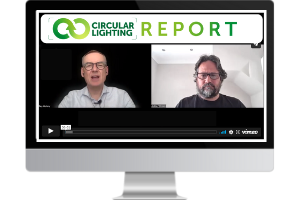LEADING lighting design practice Hoare Lea has drawn up a set of principles for its projects that it believes will help tackle the climate crisis.
The North Star strategy will, says Hoare Lea project director Juan Ferrari, be its guiding star for all future projects.
The key is balancing lighting for the occupants in the space as well as balancing against that the energy.
‘One thing should not deny the other one,’ Ferrari says in an interview with Recolight Report editor Ray Molony. ‘This notion that lighting design can only be pretty or energy efficient, is a lie.
‘It’s a big lie. Lighting design should be both and should have always been both.’
‘We have one opportunity to fix the 10 year problem that we’re facing,’ says Ferrari. ‘If we don’t act now, we’re not going to succeed. And I’m up for succeeding.’
The North Star principles are:
1. Design lighting for human experience, balanced against the needs of our planet, to create energy-efficient, sustainable, and people-centric spaces.
2. Extend creative lighting design to diverse projects, not just those that are high-end, so that the benefits are available to everyone.
3. Specify products on the basis of energy efficiency, embodied carbon, refurbishment/reuse/recycling capacity, ecological impact and human quality of life.
4. Share knowledge for the benefit of all to help clients, colleagues, and collaborators better understand lighting’s role in environmental and people-centric decisions.
5. Advocate for faster and more ambitious ecological and energy-efficiency policies across the industry – always mindful of the needs of people.
‘I think you need to take everything that is in hand, to make the best project possible for people and the planet,’ says Ferrari.
‘I would say, let’s start from the very basics. Let’s make sure that we have the right infrastructure in place to accommodate for flexibility.
‘And then we start populating once we start defining what the space is going to be used for. That would be simple, but it’s effective. And you’re not wasting luminaires.
‘So in a workplace, we would start by defining what are the right units that you’re going to measure the space against.
‘And what are you going to do with all of the the light spill that you have around your task plane?
‘So define the task plane. Define where the task happens. Define where you need to have your light. Build in the flexibility of the space. Build in the controls to give you the flexibility that you need within the space.
And try not to put luminaires in on day one, when you don’t know [everything].
‘So, for example, Cat A. Try not to do Cat A or full Cat A on day one.
‘Have a strategy for Cat A that can be flexibly built up or build down depending on the requirements of the end user. So it’s really a mixture between a Cat A and a Cat B.’

